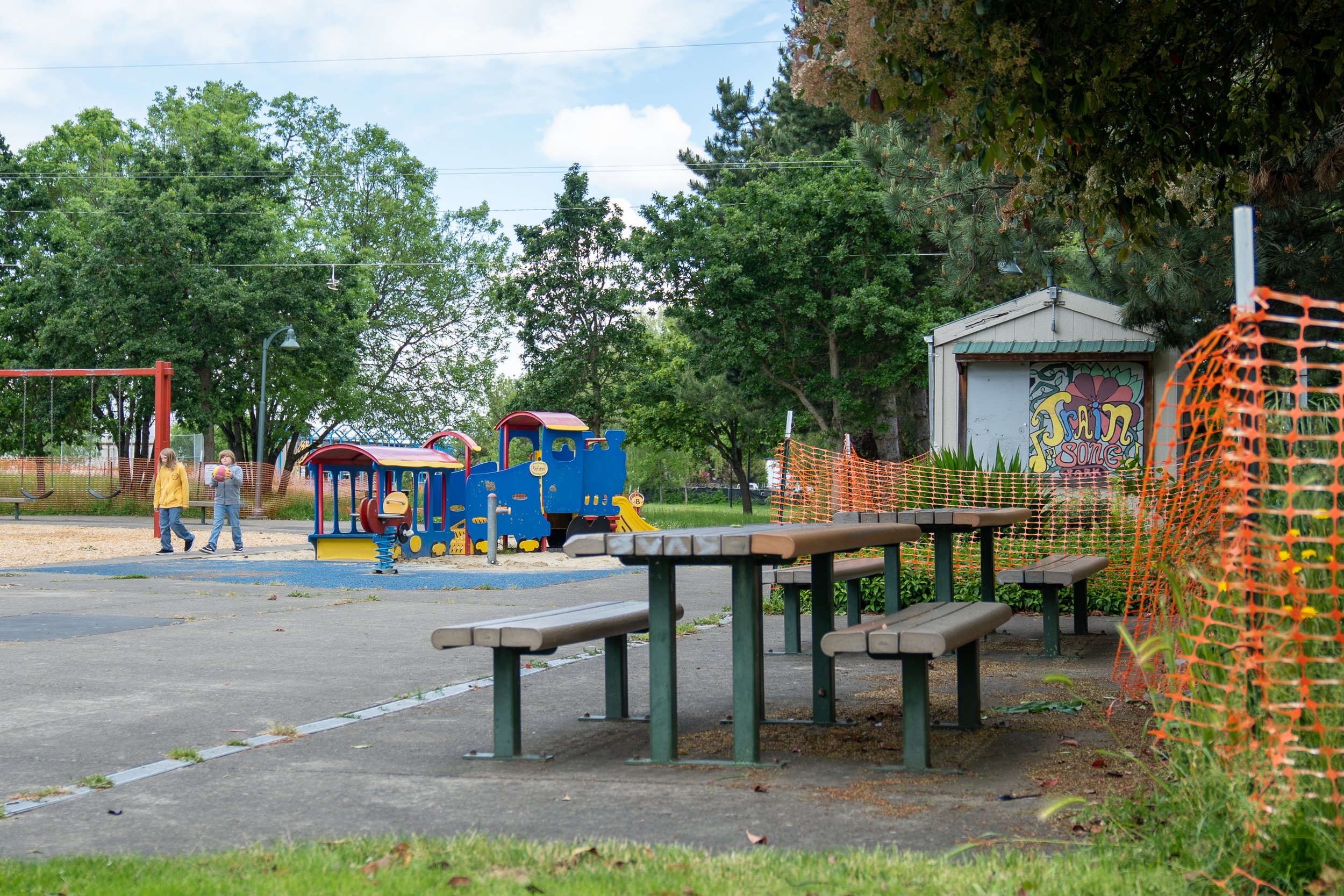A chronic polluter closes its doors. What’s next?
The owner of a wood treatment plant is trying to walk away from its mess in West Eugene, Oregon. Neighbors say, not so fast. Photos for High Country News. Article by Kylie Mohr
For my latest photo assignment with High Country News, I covered the people-powered shut-down of the Baxter wood treatment facility in West Eugene, Oregon. It was also the first time I got to also pull in drone shots for a story, which helped convey the close proximity of neighborhoods to the plant.
Zion Arberry-Baribeault and her mother, Arjorie, who used to live in West Eugene, Oregon, stand for a portrait near their current home in Portland.
Arjorie Arberry-Baribeault (pictured with her daughter Zion who overcame Hodgkin's lymphoma), got involved in Beyond Toxics after her friend’s son’s cancer diagnosis.
Now, she’s the environmental watchdog’s community organizer for West Eugene, helping residents understand what’s going on in their backyards and explaining how to contact city leaders and join community information and advocacy meetings.
Arberry-Baribeault played a central part in the grassroots organizing work which helped shut down the J.H. Baxter wood processing facility. The DEQ designated J.H. Baxter a “significant noncomplier” — meaning the company repeatedly exposed people and the environment to hazardous waste — in 2011. In 2021, the agency found that residential yards just north of the facility contain two to 24 times more dioxin than the acceptable limit.
Some areas of Trainsong Park in West Eugene, Oregon, have been fenced off due to high dioxin levels in the soil (facing). The shuttered J.H. Baxter wood treatment facility is located about a mile away from the park.
Residents say they didn’t know that J.H. Baxter was spewing pollutants when they moved in, and they wonder why the city allowed homes to be built so close to it. “You stuck us in a corner in West Eugene and said, ‘Well, that’s the industrial area,’” Arberry-Baribeault, who lived there for 25 years, said. Some residents described a resulting pervasive fatalism: They’d call in air-quality complaints to the Lane Regional Air Protection Agency, nothing would change, and, for a long time, they gave up. “If this happened in the wealthy part of town, it would’ve changed in 1985 instead of now,” said Mira Mason-Reader, who described a neighborhood full of young professionals, older residents and tree-planting efforts. “We have a really awesome community that deserves the same quality of life, regardless of how much money we make.”
Despite the win to just the facility down, J.H. Baxter is skirting its responsibility. The fight continues in the courts now for J.H. Baxter pays for the damage it has caused.
The J.H. Baxter wood treatment plant across the street from homes. The Oregon Department of Environmental Quality found several times the acceptable limit of dioxin contaminating residential yards in 2021.



